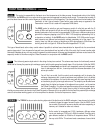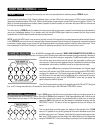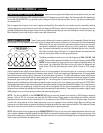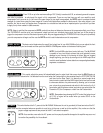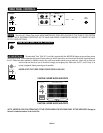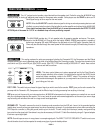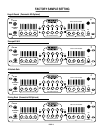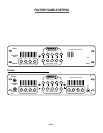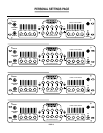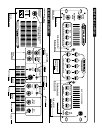
TUBE NOISE & MICROPHONICS
You may occasionally experience some form of tube noise or microphonics. Certainly no
cause for alarm, this quirky behavior comes with the territory and the Tone. Much like changing a light bulb, you don’t need a
technician to cure these types of minor user serviceable annoyances and in fact, you’ll be amazed at how easy it is to cure tube
problems...by simply swapping out a pre-amp or power tube!
First may we suggest that you set the amplifier up on something so that you can get to the tubes comfortably without having to bend
down. It also helps to have adequate lighting as you will need to see the tube sockets clearly to swap tubes. Use caution and
common sense when touching the tubes after the amplifier has been on as they may be extremely hot! If they are hot and you
don’t want to wait for them to cool off, try grasping them with a rag and also note that the glass down around the bulbous silvery tip is
considerably less hot which makes it easier to handle. Gently rock the tube back and forth as you pull it away from its socket.
DIAGNOSING PRE-AMP TUBE PROBLEMS:
Because your amplifier is an all tube design, it is quite possible that you will at
some point experience minor pre-amp tube noise. Rest assured - this is no cause for alarm and you can take care of the problem
yourself in a matter of minutes by simply swapping tubes.
Let us begin by saying; It is a “very good” idea to keep at least a couple of spare pre-amp tubes on hand at all times to insure
uninterrupted performance. These minor pre-amp tube problems can take many forms but can generally be described in two catego-
ries: Noise and Microphonics. Noise can be in the form of crackling, sputtering, white noise/hiss and/or hum. Microphonic problems
usually appear in the form of a ringing or high pitched squealing that gets worse as the gain or volume is increased thus are more
noticeable in the higher gain “HI” modes. Microphonic problems are easily identified because the problem is still present even with the
instruments’ volume off or unplugged altogether - unlike pick-up feedback which ceases as the instrument is turned down. Micro-
phonic noise is caused by mechanical vibration and shock: think of banging a microphone around and you’ll understand where the
word came from.
The best way to approach a pre-amp tube problem is to see if it occurs only in one specific mode or channel. This should lead you to
the tube needing replacement. Then all that remains is to swap the suspect tube for a known good performer. If you cannot narrow
down the trouble to a specific mode or channel, the problem may be the small tube that drives the power tubes which is operational
in all modes and channels. Though rare, a problem with the driver tube would show up in all aspects of performance - so if you can’t
narrow the problem down to being mode or channel specific, you may want to try replacing the driver tube. Driver problems generally
show themselves in the form of crackling or hum in all modes of performance and/or weak overall output from the amplifier. Occasion-
ally an anemic driver tube will cause the amplifier to sound flat and lifeless, but this is somewhat uncommon, as worn power tubes are
a more likely suspect for this type of problem.
PAGE 15



